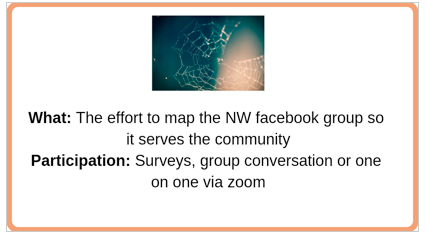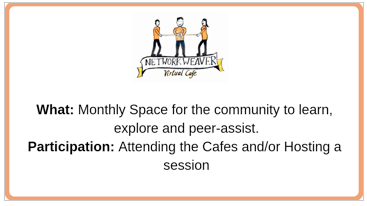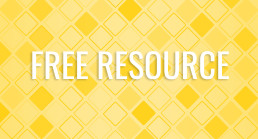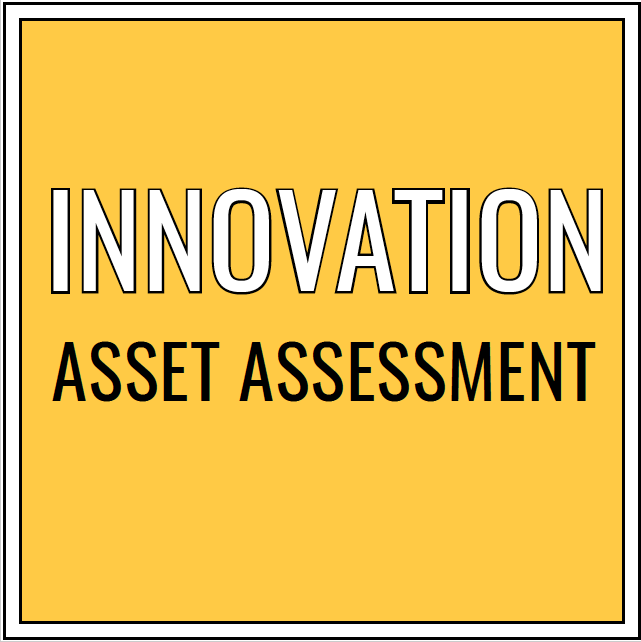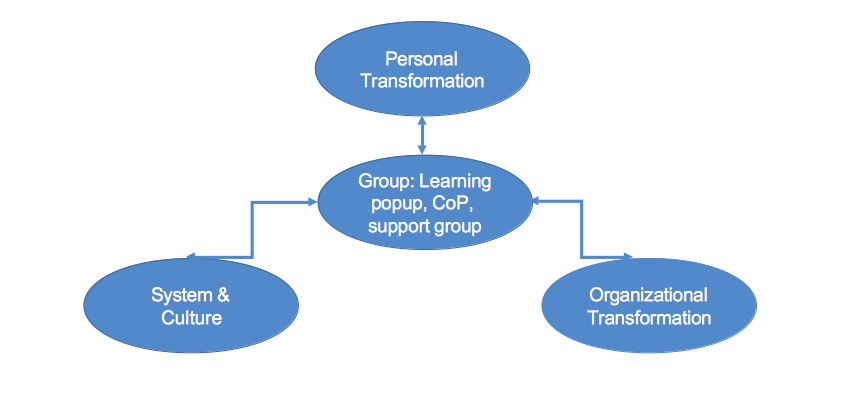Lesson Learned and Launching Pads
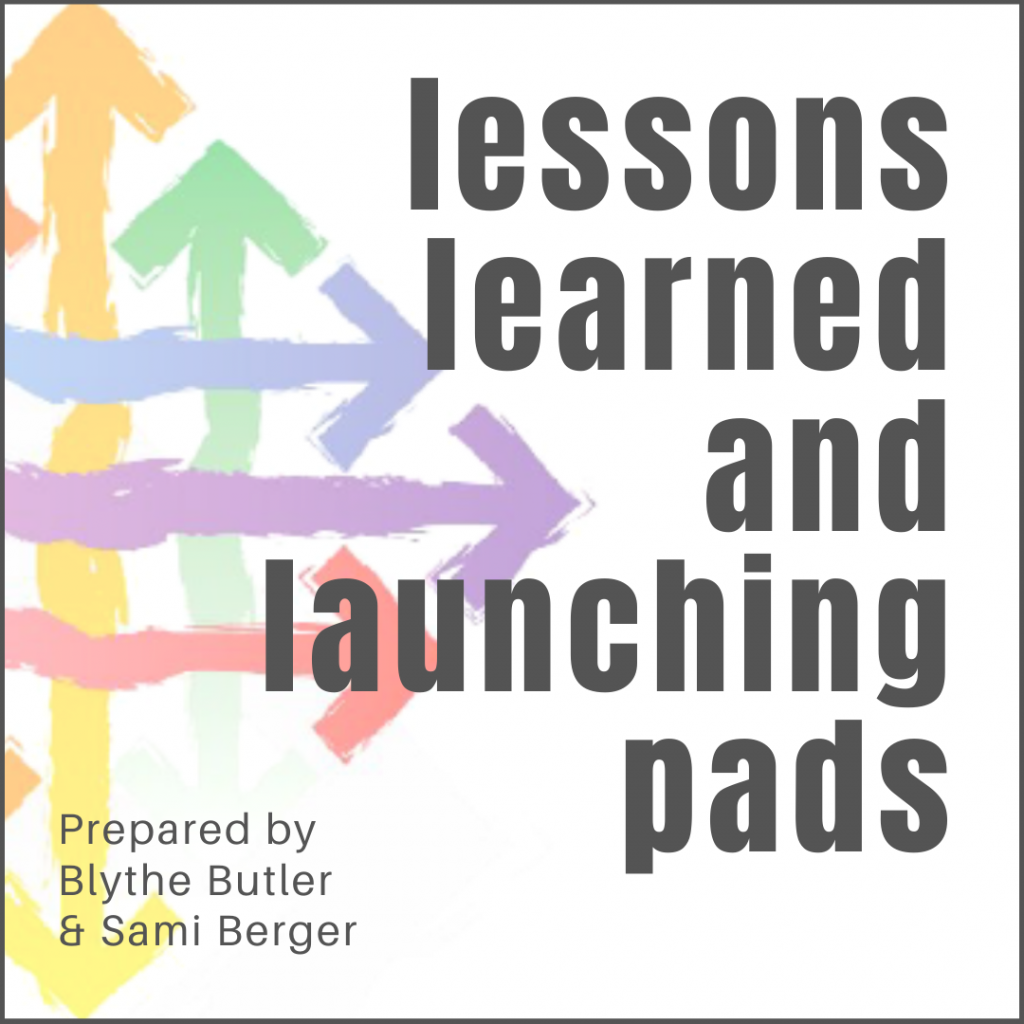
Over the past seven years, the First 2000 Days Network has invested deeply in an adaptive learning approach. This report is a summary of the high-level lessons that came out of the Network’s efforts. Building a high-quality network is a long process and the Network’s success and failures are informative for other collaborative efforts.
The Network was lucky and unique in that it had the time and space to invest in learning from lifelong champions in the sector, leading thinkers on building high quality networks, collective impact, and efforts to support families and children in global contexts. The investment in learning was foundational through the life course of the Network and was one of its greatest assets.
We hope that this report can, alongside many other resources, guide whatever comes out of these turbulent times. There will always be a need to support the youngest members of our communities in a way that acknowledges the complexities – and possibilities – of the systems that impact our everyday lives.
This is one piece of the puzzle.
Click HERE to download the report.
Prepared by Blythe Butler

My work is dedicated to building adaptive capacity in individuals, organizations and communities. My approach is rooted in organizational change, network science, strategy development, evaluation & learning methodologies.
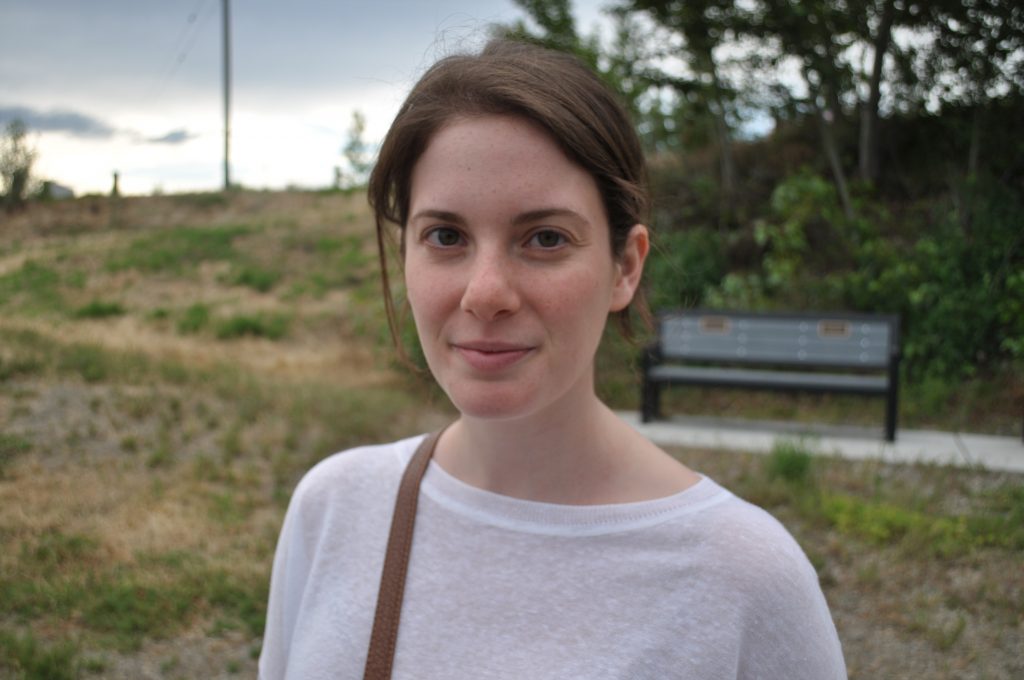
Sami’s practice focuses on developing and implementing learning strategies within networks, collaborative initiatives, government agencies, and non-profit organizations that are striving to make a positive difference in their communities. Since 2013, she has supported them with their evaluation and research needs.
Learning Weavers
What are learning weavers? Why does your network need them?
I’ve often thought that we need to spend much more time and energy making sense of and learning from what we are doing. Along with that, think how much our networks could benefit if they could share the many great ideas and practices that are generated in collaborative projects and help others use those ideas and practices in their efforts.
But it just isn’t happening to the extent that is needed. So what are we missing? What needs to happen to help capture learning and spread it around?
Last week we came up with an idea: can we explicitly build a pool of people who are assigned to network and project sessions and whose job it is to capture the essence of the session and any new ideas or practices that emerge. We could call them learning weavers.
After the session they might snip short videos from session (of course asking permission of the person speaking) where someone is sharing something important and/or innovative and share them with some annotation on the network’s email list or newsletter. They also might write a blog post sharing a particularly interesting approach with the rest of the network. For example, a slide or two used during the session might offer a useful visualization of something that the rest of the network could benefit from. The group might have used an interesting survey, or implemented an activity that could be used in other settings.
For training sessions that would be of interest to many in the network, learning weavers could annotate the resultant video, noting who was saying what at different points in the agenda. (Youtube has a simple way to create something like a table of contents that can take people directly to a specific part of the video.)
They also might periodically interview working groups or project coordinators, or members of a network circle such as communications, to find out what they have been learning and then share with the network.
These learning nuggets could be productized - turned into a module and offered free or for sale in a network store (see our Resources tab on this site for an example of such a store).
[ap_spacing spacing_height="30px"]
What skills would such a person need?
They would definitely need excellent writing skills, a knack for analysis, some video editing skills and maybe some graphics experience.
[ap_spacing spacing_height="30px"]
How much would it cost for a learning weaver pool?
I estimate that you could find excellent weavers for $50-100/hour. Your network might start with a pilot project, bringing on a group of 2 or 3 learning weavers and using them for selected sessions where you know innovation is likely to happen. You might need to invest in their learning about networks so they know what to look for, and it would be good for the group to come together after a month or two of work and analyze how it went and what needs to be changed. Such a pilot might cost only a few thousand dollars.
Seems like a small price to pay to be able to capture and share all the innovation and learning that is happening in our networks. I’d be glad to work with anyone to help set something like this up!
Please comment below and let me know what you think of this idea.
Microtrends To Amplify for Transformation
How does change happen? I saw a book in the airport about microtrends and how they give a glimpse of the possible future. Microtrends are new behaviors, actions or directions that are just starting to emerge but have the energy and excitement to expand into something significant.
I’ve long thought that dramatic and rapid change happens when we see the opportunities in new microtrends and work collaboratively to support and spread those new directions.
[ap_spacing spacing_height="15px"]
Some of the microtrends I see are:
- Antiracism work, dismantling white supremacy culture, understanding structural racism: dismantling Racism - Resource Generationhttps://resourcegeneration.org/wp-content/uploads/.../2016-dRworks-workbook.pdf We can’t collaborate effectively if we don’t know how to be peers.
- Youth leadership: https://climateemergencydeclaration.org/climate-emergency-declarations-cover-15-million-citizens “An estimated number of more than a million people in ca. 130 countries demonstrated at about 2200 events worldwide on March 24.[1][36] “
- New approaches to clothing: “no new clothes” pledges, upcycling clothing, groups making thousands of shopping bags from cloth scraps and used clothing https://boomerangbags.org; https://sew-seamless.com/the-pledge/
- Healing and arts driving change: Resonance Network is convening healers and artists to identify collaborations and ways to build community.
- Governance networks and participation: food policy councils writing policy for city sustainability plans.
- New community places and spaces: maker spaces, community and school gardens, co-working spaces, libraries adding functions like showers and PO Boxes for homeless people.
[ap_spacing spacing_height="15px"]
What microtrends do you see? Let us know in the comments below.
[ap_spacing spacing_height="40px"]
How can we help these new directions go viral?
[ap_spacing spacing_height="15px"]
Communities of Practice
One of the most powerful ways to amplify an emerging trend is to virtually convene groups or networks around the country (or world) who are working in this area as a community of practice where they can share what they have been learning in their local project(s), get support for challenges and learn more about building expanding networks of networks. This information could then be distilled and shared broadly to other communities so that they can quickly implement and adapt the new strategies.
I feel that supporting these types of communities of practice is one of the most important ways foundations can increase their impact.
Another way to expand your approach is to find other communities who want to experiment and try out your strategy and then set up virtual sessions over a six month period where you can share what you have done. These sessions should also help people plan and strategize how they can adapt your ideas to their community. Having the sessions last over a six month period will give the communities time to try out specific steps, them come back to the group and talk about their successes and challenges. This is like the community of practice idea described above but with newbies. You can do this if you add $15-30,000 to grants you apply for to cover the staff time to facilitate these sessions and coach individual communities between sessions.
Another version of this is to turn what you have learned into products that you can share and/or sell to others. The Food Corridor did this when they developed a Shared Kitchen Management Tool.
Another final way to accelerate the expansion of emerging practices is to provide support for network support structures. In addition to resources for communities of practice, networks around emerging areas need to develop communications ecosystems for expansion. This is a huge gap in that platforms that fully support self-organizing and the sharing of curated information do not currently exist. But patching together the use of zoom, google docs, discussion groups such a Facebook groups or Buddypress, slack and email/enewsletters is a start. Another support that networks need for expansion is training/information in skills such as:
- using self-organizing strategies to expand your network [ap_spacing spacing_height="10px"]
- Facilitating deep reflection so that your strategy is continually improving and making breakthroughs[ap_spacing spacing_height="10px"]
- developing information toolkits from your practice and experience so that others in other communities can adapt your strategy [ap_spacing spacing_height="10px"]
- Identifying existing networks that may be interested in helping their projects or communities try out your strategies and having conversations with them.
[ap_spacing spacing_height="20px"]
SHIFTING A SYSTEM: The Reimagine Learning network and how to tackle persistent problems
[ap_spacing spacing_height="12px"]
Some problems are simply too big for any one organization. One solution: a network of like-minded leaders working toward a common goal. Reimagine Learning, taking on systemic education issues, offers a successful model.
[ap_spacing spacing_height="15px"]
In an increasingly complex business and social environment, many are looking for collective solutions to big problems. Networks can address sprawling issues in ways that no individual organization can, working toward innovative solutions that are able to scale.
Fortunately, the collective capacity to address persistent problems is deepening in real and exciting ways. A set of tools, processes, and mindset shifts has emerged to help leaders align a set of diverse actors around a shared understanding of a problem and then create a coordinated plan of attack.1 This approach to large-scale problem-solving is a powerful way to catalyze progress.
Our full-length report, Shifting a system, presents a case study of how a group of leaders and their organizations can coalesce behind a shared vision for change.
The Reimagine Learning network came together to tackle big education issues, ultimately aggregating and deploying US$38 million in philanthropic capital. Over six years, members worked to create teaching and learning environments aimed at helping to unleash creativity and potential in all students, including those who have been historically underserved. The group—launched with 32 members, now grown to more than 700—helped build and scale organizational models that embed a focus on both social emotional learning and learner diversity, ultimately funding 25 organizations that collectively serve 7 million students nationwide.
The experience of Reimagine Learning’s members suggests lessons about effective steps that leaders might take in constructing a network:
- Map the landscape. Reframe the problem. To broaden the aperture of possibility, bring unlikely bedfellows to the table.
- Understand differences. Discover similarities. To shift the status quo, imagine the future you want to create.
- Deepen strategies. Learn by doing. To make collective progress, embrace the intellectual humility of uncertainty.
- Move from curiosity to action. To deepen organizational capacity, nurture individual curiosity.
- Grow the group. Increase impact. To understand network impact, accept a broader definition of measurable value.
- Assess the whole thing and why it matters. To know where to go, assess where you’ve been.
[ap_spacing spacing_height="20px"]
Seeking systemic solutions
In 2012, when Reimagine Learning began forming, the US education system showed serious signs of struggle, with less than 40 percent of K–12 students proficient in math or reading and 1 million dropping out of school every year.2 Meanwhile, 12 million school-aged people had experienced three or more adverse childhood experiences, such as abuse, neglect, or household dysfunction, and 21 percent of all school-aged people lived in poverty.3
Leaders in education had formed well over 100,000 education nonprofits, aiming to address some of the issues, but the scope was simply too broad for any one organization to have a significant impact. In addition, even as a growing body of research highlighted the importance of supporting diverse learners—including students dealing with poverty-related trauma—educators, researchers, and advocates for students with learning and attention issues felt excluded from the general education-reform conversation.4
The Reimagine Learning network was launched to empower groups focused on learning differences, social emotional learning, and trauma. Catalyzed by Boston-based venture philanthropy organization New Profit and US$38 million of funding, this diverse network of change agents aimed to support an approach to education based on a deep understanding of how students learn.
Reimagine Learning’s goal was audacious and desperately needed: to fundamentally reimagine how learning happens for children in this country and to offer a new vision of how to meet the needs of a set of learners typically underserved by the education system. It was a call to action that galvanized people and organizations across the country to participate in a collaborative process to craft a vision and in a strategy to shift a system.
This six-year initiative demanded a major reframe in thinking about the role of education and how to make it more effective. And changing the mindset or paradigm out of which a system arises is one of the most powerful leverage points in a system you can affect.5 But gaining a hard-won mindset shift is only the first step in a journey. In the case of Reimagine Learning, getting to that point took years, and it was only the beginning of the process to get to action on the ground that would drive outcomes for young people and families. What followed was a series of changes—within and among individuals and organizations, in classrooms and boardrooms, at the dinner table and on the floor of the US Senate—that reflected this reimagining, allowing the effort to come one step closer to unleashing the potential of all students.
Participants’ involvement in shaping Reimagine Learning’s vision and strategy prompted them to reshape their own organizations, which collectively serve 7 million students nationwide.6 At its core, engagement in the network succeeded in changing the mindsets of many of its participants, who in turn influenced practices in school districts across the country and created a deeper understanding of what supports a “whole child’s” learning in a classroom.
[ap_spacing spacing_height="20px"]
Stronger together
Obviously, not every organization—or organizational goal—is best served by developing and engaging in a network. It’s a mode of problem-solving that asks leaders to assume a network mindset and demonstrate a willingness to work with and through others.
Ultimately, working in a network requires the integration of three key dimensions: an understanding of human dynamics—the people you need to build solutions and make them stick; an ability to craft collective strategy—getting smart about the problem and developing a point of view and action plan; and developing the right network configuration—designing and weaving a different kind of structure to support a group as it forges its own path forward.
It is a way of working that defies command-and-control posturing, in which insights come from the collective—and connections among them—rather than experts. It’s a journey on which there are no short cuts, and it will try the patience of those tied to short-termism. Yet it is an approach to problem-solving that we hope continues to be tested and developed.
See our full-length report, Shifting a system—a case study developed by the Monitor Institute by Deloitte in collaboration with New Profit—for a full account of how Reimagine Learning’s members came together to accomplish real change.
[ap_spacing spacing_height="15px"]
Originally published 4/29/19 at Deloitte Insights by Anna Muoio and Kaitlin Terry Canver
[ap_spacing spacing_height="20px"]
Weaving the Weavers : Efforts to co-create global learning and peer assist
[ap_spacing spacing_height="20px"]Let´s be honest Network Weaving is super fascinating. There are so many activities that we, network weavers, can contribute to to make communities vibrant and effective. Surely, you have your own story and connection to what got you into network weaving. We can seize modern technologies to connect and and share these stories and our learnings.
There is a Facebook group called Network Weaving that currently has about 1800 members. There already has been a vivid exchange of resources and learning through posts and comments. At the beginning of this year some members began further deepening the potential of this amazing community. There are efforts to build a network map and the establishment of regular online formats. In this blog post I will give a short overview of what has been happening so far and how you may participate in the journey.
[ap_spacing spacing_height="20px"]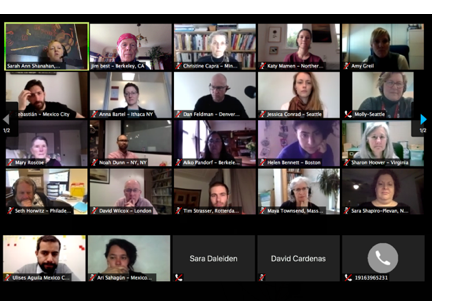
[ap_spacing spacing_height="20px"]
Purpose and Needs
Both the mapping efforts and the virtual cafe identified the needs in the community. Both groups found similar themes and purposes, which cover:
- To help the community discover its identities, building trust-based relationships, and encouraging/facilitating collaborations and learning.
- To further build the field of network weaving, understand its potential and role in systemic change.
- To deepen information flows, to connect related capacities and to attract more abundance to our work.
[ap_spacing spacing_height="10px"]
What has been happening
The network mapping journey
The journey to create a useful network map is highly participative and members of the network weavers facebook group are encouraged to join in any step of the process that is the right fit for them. There are three distinct phases that we are working through; First, we are taking the time to envision and get a better sense of what the community wants, needs and values. Once we have that clarity we’ll move into a technical phase where we’ll build the map. Finally, we’ll work together to make sense of what we are seeing in that map. We kicked off the envisioning phase with twenty seven members of the Facebook group in a zoom session with the larger group having been invited to contribute their perspective in a survey.[ap_spacing spacing_height="10px"]
The Master Mappers have extensive experience with network mapping. Christine Capra, Sarah Ann Shanahan, Maya Townsend, Lisa Negstad, Jim Best and Drew Mackie serve with their efforts and knowledge to facilitate learning, increase the awareness regarding passions and relationships within our community, and to develop the mapping skills of network weavers. This is the process of the mapping and as you see you can work closer with the Master Mappers, fill in surveys and attend the convenings.
[ap_spacing spacing_height="10px"]
Next Meeting on the 2nd April 9:00 -10:30 a.m. CT
Register at:
https://zoom.us/meeting/register/3e12488a815da90c8c34be5db4a05ad8
[ap_spacing spacing_height="20px"]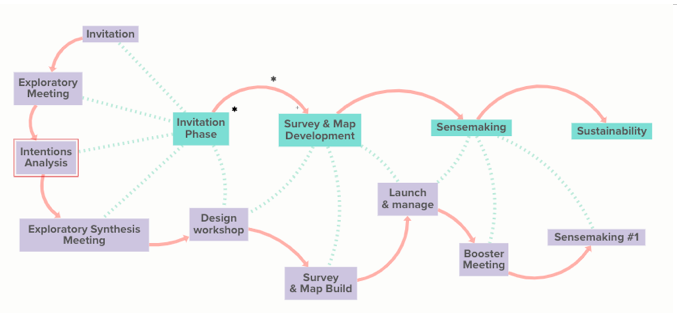
[ap_spacing spacing_height="20px"]
The Virtual Cafes, hosted by an open group of facilitators each month, aim to intensify learning, peer assistance and our service to systemic changes. There have been two cafes so far and the next one is coming up at the 4th of April. The hosts are currently Tim Strasser, Nenad Maljković, Ben Roberts, Jim Best, Keala Young and Adrian Röbke. The hosting group is open. Whomever wants to contribute is very welcome! In the last cafe on the 7th of March we explored our learning wishes and already dove into some of them in an open space, which is one of the many interactive formats we will use to have fun. These wishes to which you can add anytime are a basis for further explorations and journeys.
[ap_spacing spacing_height="20px"]
Event Link: https://www.facebook.com/events/248389826079525/?event_time_id=248389829412858
So this is about it. Personally, I feel lots of excitement and curiosity about what we can co-create as a global community. After just three gatherings I have made lots of good connections and I am sure that really cool ideas will emerge when we get together! Looking forward to seeing and hearing you soon!
[ap_spacing spacing_height="10px"]
Adrian Röbke
[ap_spacing spacing_height="20px"]
Photo by Kyle Glenn on Unsplash
How to Set Up an Innovation Fund
Innovation funds (also called seed funds or activation funds) are small regranting funds used to jump start innovation, collaboration and self-organizing in networks. They have proven to be one of the most effective strategies for high impact networks, giving people on the ground a chance to initiate action that they believe will make a difference and often leveraging many new resources as a result of their successes.
Most funded projects will bring new people into the network. When funding is combined with peer learning opportunities and opportunities to share with the larger network, the lessons learned from this strategy can have substantial positive impact on the network as a whole.
We now have quite a few examples of successful Innovation Funds, whose stories we will share in detail in the next few blog posts.
This post, however, will summarize the basic characteristics of an Innovation Fund and the processes involved in setting one up.
Innovation Funds typically have $15,000 to $50,000 to regrant in a particular round. Grants vary in size from $1500 to $8,000 and usually must be spent within 6 months.
Applicants must be collaborative projects, typically involving 3 or more organizations (or in some cases community residents). For communities where organizations are not used to working together, this requirement can start to create a culture of collaboration. Funds also restrict grants to new projects, with the idea of incentivizing innovation. In addition, funds may have a specific focus - for example the Resonance Network funded only healing and arts projects in one round.
The design and implementation of Innovation Funds are network building processes. For example, Leadership Learning Community (LLC), which has implemented 4 Innovation Fund initiatives, first recruits as many as a dozen network participants (none of whom can apply for funds) and holds two zoom sessions in which the group gives feedback on a draft design provided buy LLC.
Here are a set of guidelines given to a small rural Innovation Fund design group.
Here is a powerpoint used to recruit a fund design group for an LLC Fund.
The proposal is usually very short so it does not become a barrier for community groups. Here is an example application form from Go Philanthropic, a donor fund that works to end trafficking in south and southeastern Asia.
Sometimes a small group of network guardians are convened to make decisions about which projects will be funded. In another case, 200 people volunteered and each read and rated 2 or 3 proposals. This was a fabulous way to get many more people involved in, excited about and owning the project.
Funds are often used for a coordinator/facilitator and/or for a grant writer. Seeing the collaboration as an opportunity to create a plan and/or pilot, when combined with access to a grant writer, means that the project has the potential to leverage substantial additional funds for expansion of the innovation.
We are discovering that bringing the grantees together as a mini-community of practice enhances the learning while also creating a peer support network among the project participants. At the CoP virtual sessions, the project participants learn basic collaboration and communications skills and tools, share and help each other with challenges, and steal ideas from each other. We find that this encourages much more interaction among different projects between sessions as well.
Almost all the funds have a final session where the projects share what they have accomplished and what they have learned. We are now encouraging funds to record these sessions and share them with the entire network.
Here is a wonderful video where Miram Persley, formerly of the Leadership Learning Community, shares the details of one of their funds.
In conclusion, Innovation Funds are a powerful strategy for increasing network impact.
- They ignite a culture of collaboration and innovation in communities and enable networks to expand. This is accomplished by only funding collaborations and innovations and by engaging many people in the design and implementation process. [ap_spacing spacing_height="15px"]
- When combined with a community of practice or sharing sessions, Innovation Funds offer an opportunity to deepen collaboration and communication skills and practices, and create a support network among the project participants.[ap_spacing spacing_height="15px"]
- Innovation funds often enable collaboratives to pilot or try out an innovation. This way they have the opportunity to show funders that the new approach can work, thus paving the way for additional funding and spread of the innovation.[ap_spacing spacing_height="15px"]
- Innovation Funds offer a new approach to complex problems: they are created through the initiative of people on the ground, who have a deep understanding of their problems and strong intuitions about how they might be remedied. Especially if project participants are brought together for deep reflection, the process can unearth insights, help identify breakthroughs in understanding about the problem, and unearth patterns for success in dealing with the problem.
In future blog posts we will share the stories, processes and documents from Go Philanthropic, Leadership Learning Community and the Resonance Network - three of the most successful Innovation Funds.
[ap_spacing spacing_height="15px"]We encourage you to comment on this post so we can hear about your thoughts and experience.
Network Weaver Free Resources Package
Each week, we add a new free item to our store.

This week we are offering: Network Weaver FREE RESOURCES PACKAGE.
ALL of the free resources currently available at the Network Weaver Resource Page in one complete downloadable file.
Innovation Asset Assessment
Network innovation is a key ingredient in system shifting networks. Innovation Asset Assessment is a survey you can use to assess just how innovative your network is. It can be printed out, handed out to network participants and the aggregated to determine the network's innovation strengths and challenges. You might also want to convert this into an online survey (using google forms or survey monkey).
Learning about Change and Transformation
[ap_spacing spacing_height="35px"]Co-Design Series Part 4[ap_spacing spacing_height="28px"]
Most of you reading this post are involved in what are called social change efforts. We are working on social change because we want the world to be full of communities that are good for everyone. But the reality is that our communities are full of problems - poverty, drugs, intolerance, etc - and most of us are working diligently to try to crack open these problems and find solutions.
What is amazing is how little time we actually spend thinking about change - how it happens, how it can be supported, how to increase it and most importantly, how to make it transformative.
Increasing numbers of us know that what it is going to take is not simple incremental change but transformation - shifting the systems in which these problems are occurring.
Transformation means changing the way our society operates so that it reflects healthy values: this means that all our institutions, our processes, our interactions are open and transparent, inclusive and diverse, innovative and experimental, where power is equally distributed, and we work collaboratively together.
But transformation doesn't just happen on the system level. Transformation needs to occur on every level: at the same time we are working to change institutions such as the prison system we need to be working on personal change and on organizational change.[ap_spacing spacing_height="20px"]
Diagram 1. Groups help us change on other levels
[ap_spacing spacing_height="20px"]
If we don't change as individuals - our mindset, the way we interact with others and who we interact with - we’re not going to be able to work well with others to shift the systems. And it's only when we begin to interact with others who have different perspectives that we are able to see the hidden assumptions we have been making that have been keeping our efforts from leading to systemic change,
For example, if we are trying to develop strategies to end poverty and we don't have any people who are actually living in poverty in the room with us figuring out the best way to address poverty, we will be unlikely to come up with solutions that will be more than a Band-Aid on the complex and massive problem that poverty represents.
And, we won't get other people in the room with us unless we change and become better listeners, more open to new ideas, and more willing to let go of control.
Another example of why it's so critical that we change as individuals is because our endless “to do lists” are holding us prisoners and keeping our work from being transformative. When June worked with people as an executive coach, they discovered that their to do lists were filled with items that were nonessential. These nonessentials distracted people from spending time on stepping back from their work as a whole. It's only when people learn to scrutinize and prune their to do lists that they have time to reflect on what they're really doing and notice what works and what isn't. (see Worksheet: Freeing up your time for transformation Free in Resources Section)
What keeps us from changing? We need to become more aware of our behavior so that we remember to change. Personal assessments or checklists and then daily journaling are helpful tools for change. How can we encourage more people to incorporate these into their daily lives?
But let’s face it, change is hard to do alone. We need the support of others to help hold us accountable, listen to our challenges, and give us ideas for strategies. Small support groups or learning pop-ups are very beneficial for personal change, and they can support us as we work to change our organizations.
And, when we change ourselves, but don’t simultaneously help our organizations transform, we will continually run up against obstacles in our work. For example, many organizations see time spent on building relationships with those outside the organizations as a waste of time rather than an important step in network building and discourage or forbid their employees to network. Or, our manager insists on getting approval from her/him for the action steps we take in collaborative projects with other organizations, thus slowing down responses to opportunities that arise.
One of the best ways to change both ourselves and our organization is to be part of small groups where people help each other change. These can be support groups, learning pop-ups or communities of practice (monthly sessions where people share skills and provide support for each other around challenges that they face in getting their organizations to shift to a network mindset). In addition, working with others on self-organized projects related to our work can be a powerful way to shift behavior.
Networks can also set up friendly fun systems to enable us to identify where we want to change, help us get ideas for how we can change, and get feedback on those changes.
[ap_spacing spacing_height="15px"]
Read Part 1 of the Co-Design Series HERE
Read Part 2 of the Co-Design Series HERE
Read Part 3 of the Co-Design Series HERE
Criteria For A Design Process Emerging From Network Values
[ap_spacing spacing_height="35px"]Co-Design Series Part 3[ap_spacing spacing_height="28px"]
First, we wanted to make sure our definition of co-design fit our list of network values.
[ap_spacing spacing_height="15px"]1) The co-design process needs to create an alternative to the inevitable unequal power found in a conventional design process. Participants must be peers with the designers not just subjects of inquiry. Designers must recognize, honor, and center the true expertise needed to design the product - that of the participant/user. Participants should have equal weight in designing and determining the end products that the design process creates. Ask, Does everyone feel like their expertise, experiences, and contexts are valued?
Cea and Rimington describe 5 ways to equalize power in a design process:
- define the problem at hand with the others involved
- trust all players with full information about the big picture of the project and the constraints
- support authentic leadership roles and structures for participants
- create an environment that incentivized decentralization of creative input and power
- encourage fluid roles.
[ap_spacing spacing_height="28px"]2) To underscore trust and promote deep learning, we think the design process should develop long-term relationships between designers and users. This moves everyone involved from transactional relationships to those that can be transformative. For this to happen, we cultivate relationships that support vulnerability and truth-telling. Furthermore, these deeper, more honest and peer like relationships will strengthen the overall network: any codesign process is a network building process. Ask, “Do people feel comfortable sharing their true opinions of the process and product?”
[ap_spacing spacing_height="28px"]3) Next the process must have maximum engagement of the participants who will be impacted by the product or who are interested in the design process to develop the product. This suggests moving beyond focus groups to having more rigorous, regular feedback on prototypes; literacy needs to be developed in everyone to understand contexts, technical terms, and experiences. People need to have opportunities to engage in different venues (one-on-ones, small groups, full group convenings). Ask, "Are people excited to engage?”
[ap_spacing spacing_height="28px"]4) The process must value difference and diversity of perspectives. This means that many different kinds of people - young and old, people from different backgrounds - are included. This is critical because it is diversity that leads us to question our assumptions and think differently about design. We like the term productive conflict. Ask, “How can differences let us see a new way of looking at things?”
[ap_spacing spacing_height="28px"]5) Everyone involved in the process needs to understand that the product development process is iterative. Any design is in perpetual beta. We need to be continually involved in gathering feedback and using it to transform the products that we co-create. Ask, “Is there energy for continued conversations about the product or process?”
[ap_spacing spacing_height="28px"]6) In most cases, the initial design team will involve a limited number of participants of the network - even if it uses participative processes. However, part of the design process needs to be strategizing how each design participant can introduce and share the product with others in their network so that the product goes viral. Ask, “Does everyone in the network have a chance to try out the new product to determine usefulness?"
[ap_spacing spacing_height="28px"]7) The design process is also an opportunity for participants to learn how to conduct co-design processes in their organizations and local networks. Ask, “Does the design process provide time to help participants integrate co-design into all network processes?”[ap_spacing spacing_height="28px"]
Read Part 1 of the Co-Design Series HERE
Read Part 2 of the Co-Design Series HERE






